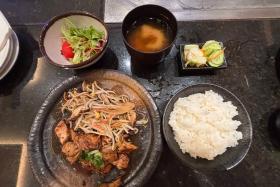Savour the success story of Australian wine
Check out the Australian wines available at FairPrice
Wine-growing in Australia is relatively recent. In fact, the country is referred to as a New World producer.
The first vine cuttings were taken to Australia in 1788 by Admiral Arthur Phillip on the First Fleet to New South Wales.
The British Royal Navy officer was governor of what was then a penal colony which later became the city of Sydney. The vines had come from the Cape of Good Hope in South Africa.
An attempt to make wine from those vines failed.
But it did not take long for later settlers to successfully cultivate vines for winemaking. By the 1820s, Australia-made wine was available on the domestic market.
And 197 years ago, Gregory Blaxland became the first person to export Australian wine. He was also the first winemaker in that country to win an overseas award.
The first, I may add, of many more to come down the vintages.
Today, we take for granted how successful and well-accepted Australian wine has become throughout the world.
In fact, it's near impossible to imagine an international wine list without anything from Australia.
Such then is the success that Australian wine has achieved in just two centuries, which some Old World producers wish they could also enjoy, considering they have been growing wine for up to 3,000 years.
Today, Australia is the world's fifth largest exporter of wine.
According to the organisation Wine Australia, the country produced 1.29 billion litres - or 1.71 billion bottles - of wine in 2018, and about 60 per cent of that is exported.
Wine is produced in all six states, namely New South Wales, Victoria, Queensland, Western Australia, South Australia and Tasmania, with most of the 60-plus designated wine regions in the cooler, southern parts.
There are about 160,000 hectares of vines and these are mainly for Shiraz, Cabernet Sauvignon, Chardonnay, Merlot, Semillon, Pinot Noir, Riesling and Sauvignon Blanc.
Almost every bottle of Australian wine will carry the name of the grape variety or varieties on the label. If only a single variety is used, it must constitute at least 85 per cent of the wine.
Whereas most Old World producers such as Greece, Italy, France, Spain and Germany have wine regions specialising in certain grape varieties, Australia - like most other New World producers such as South Africa, the US, Chile, Argentina and New Zealand - grows whatever it likes, wherever it wishes, as it is not tied to tradition.
This unbridled freedom, I believe, has contributed much to Australia's remarkable achievements.
Here are my recommendations that are available at FairPrice:
Thompson Estate Chardonnay 2016 ($61)
Bright light straw. The nose and palate are one and the same, a weave of apple/pear/melon/citrus/vanilla. Elegant, fresh, subtle and tensioned. Expertly balanced. Medium-plus-ish bodied. The wine consultant is Bob Cartwright, who was head winemaker at the famed Leeuwin Estate from 1978 until he retired in September 2005, an impressive portfolio of 28 consecutive vintages. Very unassuming and humble, Cartwright is highly respected and widely recognised as one of Australia's finest, most accomplished winemakers.
Thompson Estate Cabernet Sauvignon 2016 ($61)
Blueberry/blackcurrant fruit supported by ripe, smooth tannins that have a lift on the finish. The suppleness of fruit and smoothness of tannins are very well-integrated and wonderfully balanced. Medium-plus-ish bodied. Enjoyable on its own and outstanding with meat dishes including pork, chicken, duck, beef and lamb. Thompson Estate is situated in Margaret River, Western Australia and owned by heart specialist and consultant cardiologist Professor Peter Thompson and his wife Jane, a retired lawyer.
Thompson Estate Andrea Reserve Cabernet Merlot 2012 ($51)
Ripe, rich, tensioned blue- and blackberry fruit with blackcurrant/cassis personality. The ripe fruit is on full but controlled display. Without doubt, Andrea Reserve Cabernet Merlot is a great expression of all that is unique in this relatively cool-climate Aussie region. Delicious on it own and exceptional with red meats. Incidentally, Andrea is the middle name of Jane Thompson, co-founder of the estate.
Alkoomi Frankland River Jarrah Shiraz 2012 ($57)
Smoky/toasty oak. The ripe raspberry fruit is solidly structured by rich oak tannins. Decant the wine for 15 minutes and enjoy with food including red meats, whether grilled or in a stew or casserole. The Jarrah is a eucalyptus tree native to Western Australia, while Alkoomi is in Frankland River in the deep south of the state.
Alkoomi Frankland River Blackbutt 2009 ($74)
This is a Bordeaux-inspired red and comprises 63 per cent Cabernet Sauvignon, 20 per cent Malbec, 10 per cent Merlot, 3.5 per cent Petit Verdot and 3.5 per cent Cabernet Franc. The vines are older than 40 years. Smoky, toasty, blackcurrant-y fruit with a touch of tobacco and leather. Blackbutt is the name of a rare, majestic species of eucalyptus tree called Eucalyptus patens which grows in the same gravelly soil as the vines.
The writer is wine consultant for FairPrice. He is also regional chairman of Decanter World Wine Awards, vice-chairman of Decanter Asia Wine Awards and a columnist for the World of Fine Wine magazine in Britain.
Get The New Paper on your phone with the free TNP app. Download from the Apple App Store or Google Play Store now







